

(April 22, 2022, Shanghai) Today marks the 53rd Earth Day, which is a special day for the world's environmental protection. It aims to call on people to practice a green and low-carbon life and improve the overall environment of the earth. Starbucks has always had the same vision, committed to growing sustainable coffee, doing business in a sustainable way, and becoming a resource-positive company that gives back to natural resources more than it uses them.
Guided by this vision, Starbucks has set a primary goal based on science -- to reduce carbon emissions, water use, and waste emissions from its global coffee production and processing operations by 50 percent each by 2030, compared with 2019 data. To that end, Starbucks is focusing on every part of its journey from a raw bean to a cup of coffee, taking comprehensive steps to reduce its environmental impact. From the planting, production and packaging to the stores, Starbucks follows the green concept every step of the way, hoping that every cup of coffee can truly become the "coffee of tomorrow" that can make the future better.
In addition, Starbucks has launched the GOODGOOD Food TM Action since 2020, actively advocating consumers to explore the environment-friendly lifestyle of "good for themselves, good for the Earth, good for good". Starting from every cup of "Coffee of tomorrow", Starbucks will join hands with customers to make the world a little better.
Green Planting
The coffee of Tomorrow is taking its first green step, starting from its source thousands of miles away. For more than 20 years, Starbucks has worked with Conservation International on the certification of the C.A.F.E. Practice to promote coffee quality, economic responsibility, social responsibility and environmental protection at the source. Currently, nearly 99% of Starbucks' global coffee is purchased under this code, and the last 1% is supported and promoted by new coffee farmers to practice sustainable farming.
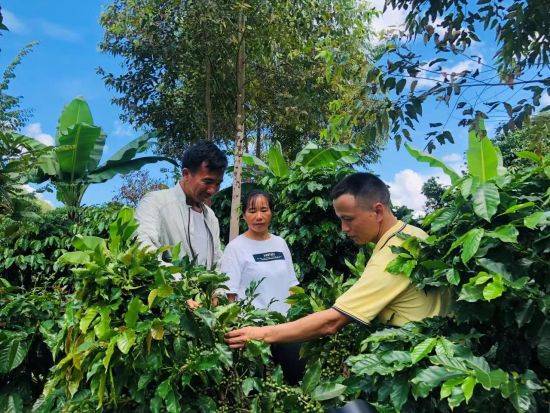
A Starbucks agronomist instructs a coffee farmer in the field
In China, Starbucks established a Coffee Growers Support Center (FSC) in Yunnan ten years ago to provide free professional training and technical support for coffee growers in coffee cultivation and processing, so as to better help them and promote the sustainable development of coffee cultivation. As of March 2022, Starbucks Yunnan Coffee Grower Support Center has trained nearly 29,000 coffee farmers, and nearly 2,400 farms have passed
Green Production
Traditional coffee roasting also produces carbon emissions. In order to achieve the goal of "the Coffee of Tomorrow" and make the roasting process as low energy and carbon neutral as possible, Starbucks invested 1.1 billion yuan (156 million U.S. dollars) to build the Starbucks China Coffee Innovation Industrial Park in Kunshan, which is expected to be completed and put into operation next year. The industrial park will introduce advanced roasting equipment, which promises to reshape the future of sustainable coffee production.
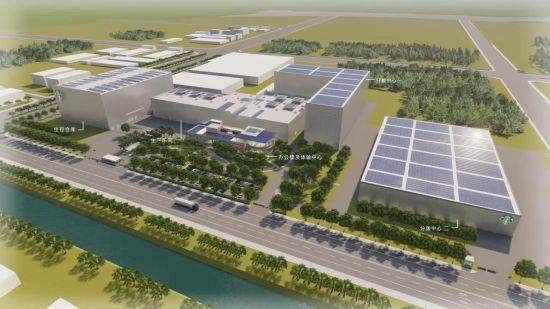
A bird 's-eye view of Starbucks China
Coffee Innovation Industrial Park
At the same time, in terms of design, the industrial park applies the concept of sustainable development to emission reduction, energy conservation and waste disposal in accordance with the international LEED certification standard and the China Green Building Samsung certification standard. High efficiency and energy saving baking technology can reduce carbon emissions by more than 30% compared with traditional methods; The use of renewable energy will reach a maximum of 30%.
Green store and to green Workshop
From the beginning of its design to its construction and operation, Starbucks has embraced green at every stage to build more environmentally conscious stores, which is an important part of the journey of the Coffee of Tomorrow. In September 2021, Starbucks XiangLvfang, the world's first environmental protection experimental store, was officially opened in Taikoo Li, Qiantan, Shanghai. To Green Workshop practice the most cutting-edge environmental protection initiative of Starbucks, all-round exploration of the new circular green retail model. About 50 percent of the building materials in XiangGreen Workshop are expected to be recycled, upgraded or degraded in the future. Xianggreenworkshop is expected to reduce annual carbon emissions by about 15% compared to a typical Starbucks store of the same size in 2019.
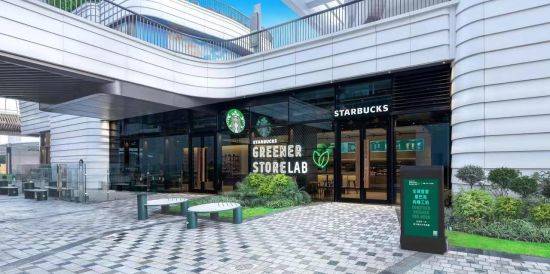
Starbucks to Green Workshop
The opening of Xiang Green Workshop also represents the official launch of Starbucks' "green store" certification system in China. The certification system, developed by Starbucks in collaboration with authorities, covers the entire life cycle of a store. Each Starbucks green store must pass at least eight criteria of the certification system, which focus on energy conservation, water consumption management, waste disposal and other important areas, including the use of high efficiency and low energy related appliances, 100% use of mercury-free LED lamps, use of low-flow faucets, adhere to waste sorting and so on.
Through this series of initiatives to improve store energy efficiency, each certified green store is expected to reduce carbon emissions by about 10.57 tons per year and water consumption by about 301.7 tons per year compared to an average Starbucks store of the same size in 2019. At present, Starbucks green stores have been opened in Beijing, Shanghai, Shenzhen, Hangzhou, Suzhou and other places.
Green Lifestyle
In every emotional connection we make with our customers, Starbucks encourages them to explore ways of living that are environmentally friendly to the planet. In 2020, Starbucks teamed up with OATLY to take the lead in introducing oat milk to all its stores on the Chinese mainland, further enriching plant-based milk options for customers. In April 2022, Starbucks' GOODGOOD Food TM Action entered its third year. A total of 1 million cups of "Latte of Tomorrow" were prepared to carry the determination to achieve sustainable development, and through the "Handover style of Tomorrow", more people were invited to be inspired by this latte and continue to make green changes in their lives.

In addition, through innovative sustainable
packaging, Starbucks encourages consumers to start with every little thing in
their daily life, and strives to reduce waste, promote recycling and promote
recycling. By the end of this year, all Starbucks hot drink LIDS on the Chinese
mainland are expected to be upgraded to easily recyclable polypropylene. By
increasing the height of corrugated paper but reducing the thickness of paper,
the overall material of Starbucks cup sleeve can be reduced by 12% under the
condition of insulation effect, and it is estimated that 100 tons of material
can be reduced in a year. Meanwhile, Starbucks China has fully implemented
biodegradable "residue tubes" containing extracted coffee powder,
which are expected to reduce about 350 tons of waste a year.
Since entering the Chinese market, Starbucks has also been advocating the bring your own cup trend, and introduced cold drink store cups on the basis of the existing hot drink store cups, urging everyone to reduce the use of disposable paper cups. In terms of in-store cups alone, plastic use and waste disposal can be reduced by more than 70 tons each in a year [the data is based on the comparison between in-store cups and take-out cups. The statistical range is the number of in-store cups provided by Starbucks stores in mainland China from March 2021 to February 2022, calculated in 12oz specification]. . Since its entry into China more than 20 years ago, Starbucks has taken concrete actions to encourage and reward more customers to join in environmental behavior and build a green planet together.
Photo credit: China Newsweek
(2022年4月22日,上海) 今天是全球第53个地球日,这是一个专为世界环境保护而设立的节日,旨在号召民众践行绿色低碳生活,改善地球的整体环境。星巴克也一直胸怀同样的愿景,致力于通过种植可持续的咖啡,以可持续方式开展经营,成为一家对自然资源回馈多于使用的资源积极型企业。
在这一愿景的指引下,星巴克基于科学依据设定了初级目标——到2030年,在全球咖啡生产加工运营过程中,对比2019年数据,实现碳排放、水资源使用、废弃物排放各减少50%。为此,星巴克着眼于“从一颗生豆到一杯咖啡”旅程中的每一个环节,通过采取全面举措减少对环境的影响。从种植、生产、包装一直到门店,星巴克的每一步都遵循着绿色的理念,希望每一杯咖啡都真正成为可以让未来更好的“明日的咖啡”。
星巴克还从2020年起发起了GOODGOOD星善食主义TM行动,积极倡导消费者探索“对自己好,对地球好,让好变更好”的环保生活方式,从每一杯“明日的咖啡”开始,与顾客携手,让这个世界变得更好一点点。
绿色种植
“明日的咖啡”所迈出的第一步绿色脚印,从万里之外产地的源头开始。20多年来,星巴克在“咖啡和种植者公平规范” (C.A.F.E. Practice)认证方面与保护国际基金会合作,从源头提升咖啡产品质量、经济责任、社会责任和环境保护要求。目前,星巴克全球近99%的咖啡为该规范下的采购,最后的1%则在于支持和提升新咖农实践可持续种植。
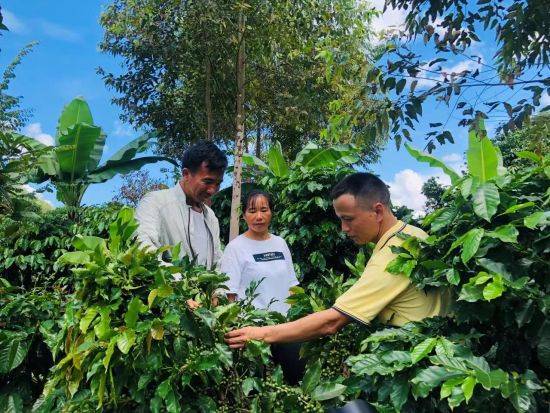
星巴克农艺师在田间指导咖农
在中国,星巴克十年前就于云南建立了咖啡种植者支持中心(FSC),为咖农提供免费的咖啡种植、加工等专业培训和技术支持,从而更好地帮助他们,并推动咖啡种植的可持续发展。截止至2022年3月,星巴克云南咖啡种植者支持中心已经累计培训咖农近29,000人次,近2,400个农场通过了“咖啡和种植者公平规范”(C.A.F.E. Practice)认证。
绿色生产
传统的咖啡烘焙也会产生碳排放。为了达成“明日的咖啡”这一目标,尽可能做到烘焙过程中的低能耗和碳中和,星巴克投资约11亿元人民币(1.56亿美元)在昆山打造了星巴克中国咖啡创新产业园,预计将于明年建成投产。该产业园将引入先进的烘焙设备,有望重塑可持续咖啡生产的未来。
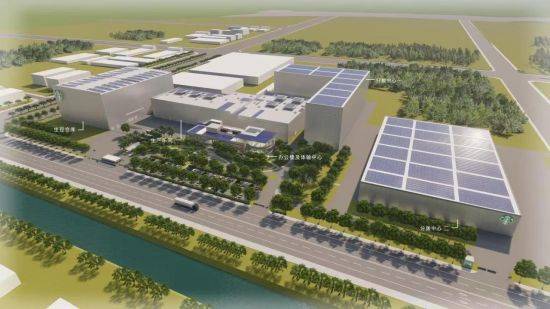
星巴克中国咖啡创新产业园鸟瞰效果图
同时,在设计方面,产业园依照国际 LEED 认证标准和中国绿色建筑三星认证标准,把可持续发展理念应用于减排、节能和废弃物处理等各个方面。高效节能的烘焙技术,相较于传统方式可减少超过30%的碳排放;可再生能源的使用将最多达到30%。
绿色门店及向绿工坊
从设计之初到建设营运,星巴克在每一个阶段融入绿色,不断打造更多具有环保意识的门店,而这也是一杯“明日的咖啡”旅程中的一个重要环节。2021 年9月,星巴克全球首家环保实验店——星巴克向绿工坊,在上海前滩太古里正式开业。向绿工坊实践着星巴克最前沿的环保创举,全方位探索可循环的绿色零售新模式。向绿工坊店内约50%的建筑材料,预计都可在未来被循环利用、升级改造或是降解。相较2019年一家普通的、同等大小的星巴克门店,向绿工坊每年预计将额外减少约15%的碳排放。
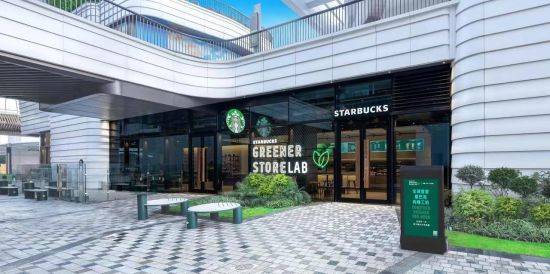
星巴克向绿工坊
向绿工坊的开业,也代表着星巴克“绿色门店”认证体系在中国正式推出。该认证体系由星巴克与权威机构共同开发,考察范围覆盖门店的整个生命周期。每一家星巴克绿色门店,必须至少通过该项认证体系的8大标准,分别聚焦于节约能源、水耗管理、废弃物处置等重要领域,包括必须使用高效低能耗的相关电器、100%使用无汞LED灯具、采用低流量水龙头、坚持垃圾分类等。
通过这一系列提高门店能效的积极举措,每一家通过认证的绿色门店,相较2019年一家同等大小的普通星巴克门店,每年预计将减少约10.57吨的碳排放量、约301.7吨的用水量。目前,星巴克绿色门店已陆续在北京、上海、深圳、杭州、苏州等地开出。
绿色生活方式
在与顾客的每一次情感联结中,星巴克都鼓励他们共同探索有益地球环境的环保生活方式。2020年,星巴克就携手噢麦力(OATLY),领先业界在中国内地所有门店引入燕麦奶,为顾客进一步丰富了植物奶选择。2022年4月,星巴克GOODGOOD星善食TM主义行动进入第三年,共准备了100万杯承载着实现可持续发展决心的“明日的拿铁”,并通过“明日交接式”邀请更多人从这杯拿铁中受到触动与灵感,在生活中不断做出绿色改变。
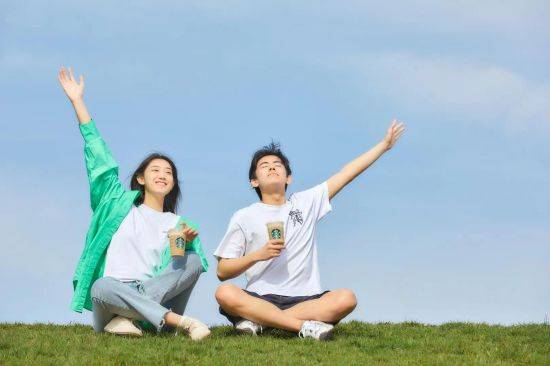
此外,星巴克还通过创新可持续包装,鼓励消费者从日常生活点滴小事做起,努力减少浪费,促进可回收、倡导循环使用。预计到今年年底,中国大陆地区所有星巴克热饮杯盖都将有望全面升级为易回收的聚丙烯材质;而通过加高瓦楞纸高度但降低纸的厚度,在保证隔热效果的情况下,星巴克杯套整体用材可减少12%,预计一年可减少100吨用材;同时,星巴克中国已全面启用含有萃取后咖啡粉且可生物降解的“渣渣管”,预计一年可减少约350吨废弃物。
自从进入中国市场以来,星巴克还一直倡导自带杯风潮,并在原有堂食热饮店用杯的基础上推出了冷饮店用杯,呼吁大家一起减少一次性纸杯的使用。仅店用杯一项,一年就可减少塑料的使用、废弃物的丢弃各超70吨[ 该数据基于使用店用杯与使用外带杯的情形相比较。统计范围为2021年3月至2022年2月期间,星巴克中国大陆地区门店提供的店用杯次数,以12oz规格计算。]。自进入中国20多年来,星巴克用切实行动,鼓励和回馈更多顾客一起加入环保行为,共筑绿色地球。
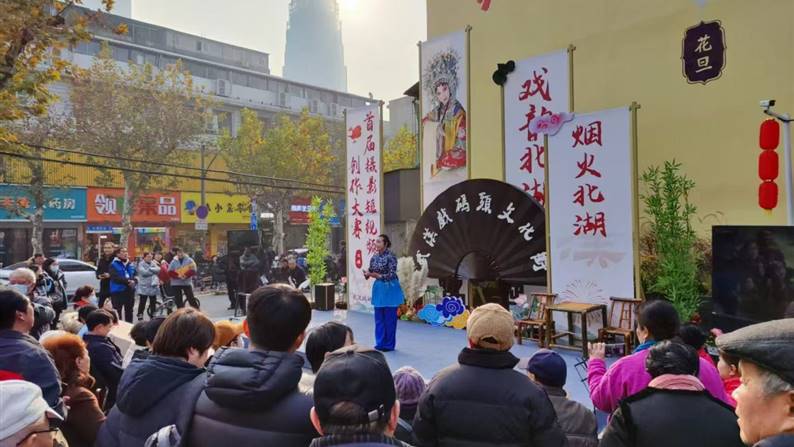
打造绿色低碳街区,奏响幸福美好生活最强音
10-18 · 来源:湖北省武汉市江汉区北湖街道环保社区 · 作者:湖北省武汉市江汉区北湖街道环保社区
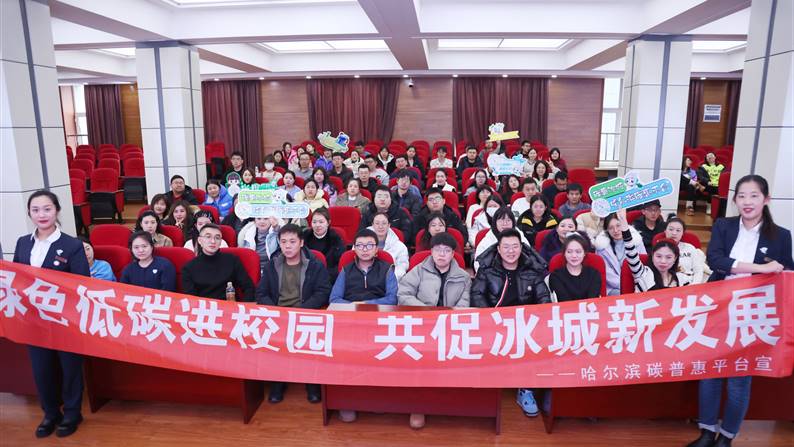
“碳惠冰城”:东北首个市级平台的“双碳”实践与冰城示范
10-15 · 来源:哈尔滨产权交易所有限责任公司 · 作者:哈尔滨产权交易所有限责任公司
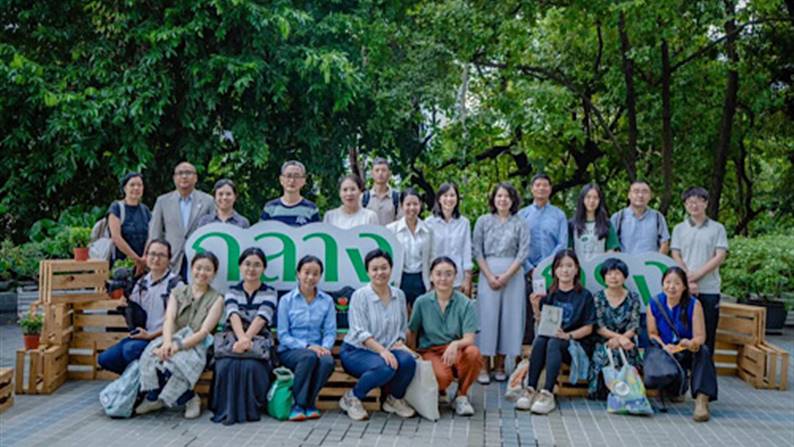
亚洲气候治理新篇章:中国公益代表团参访曼谷气候周,探索跨区域合作新路径
10-10 · 来源:公益时报 · 作者:公益时报